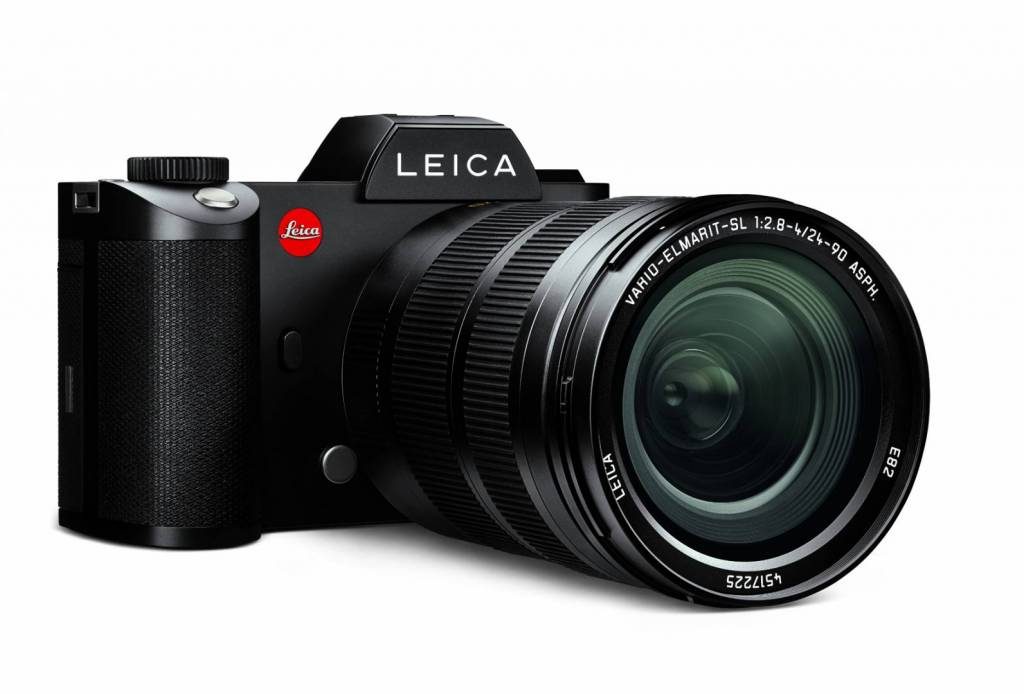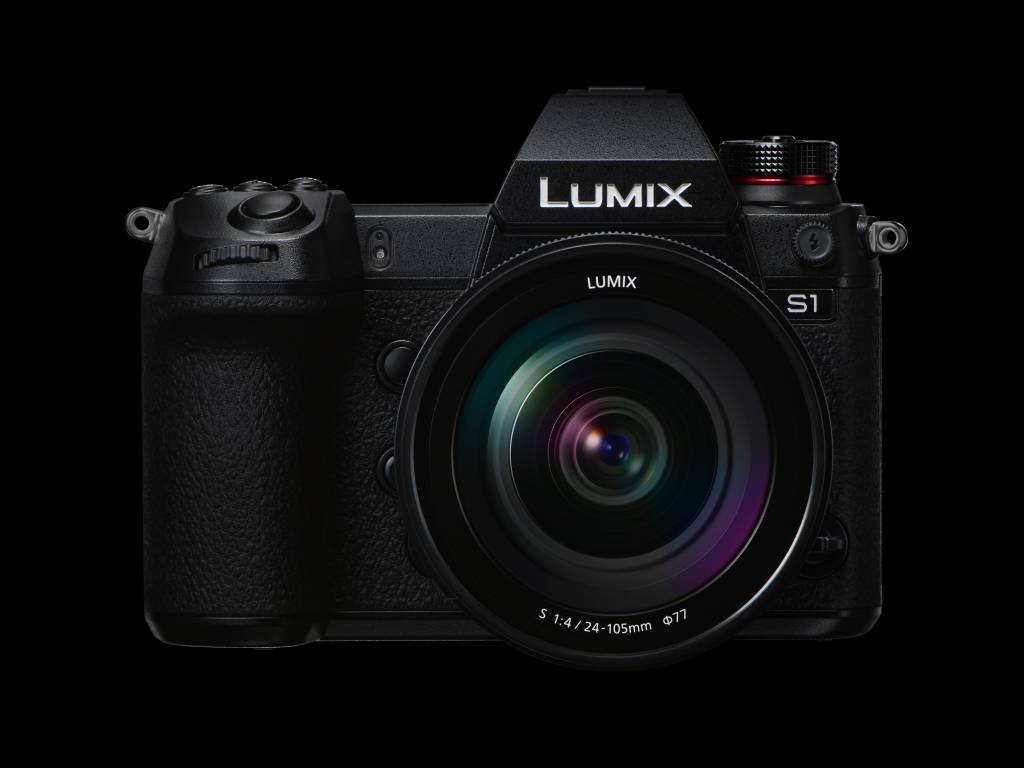Leica’s SL has been in the news recently because of the unprecedented near 30% discount (disguised as a trade in) on the current model. An SL2 will arrive later this year but, in the meantime, there are bargains to be had on the old model. Or, perhaps I should use the past tense because, not surprisingly, most those used SL bodies at £2,400-£2,600 have already been snapped up.
For just a couple of hundred more than a new Panasonic Lumix S1, a used Leica makes some sense, despite lacking features such as in-body stabilisation. In the long term, it will depreciate less than a new Panasonic.

Even I was tempted by those low prices. I’ve owned the SL twice and, as documented here on Macfilos, both times I decided eventually that it was too heavy (for me, I stress, and not necessarily for you).
This is still one of my favourite lenses of all time. It’s the zoom I was happy to use (subject to the weight question) without my mind wandering constantly to my beloved primes.
Academic interest
Recently I have been taking an academic interest in the new Lumix models. The L-Mount Alliance and the prospect of even more lenses for the SL/S1 cameras is an incentive to get back into the game, if only for test purposes.
The Panasonic S1 and S1R are without doubt impressive cameras. They handle extremely well, perhaps better than the SL with which they share a very similar chassis. The viewfinder is absolutely stunning, even compared with the ground-breaking finder in the SL. With its in-body stabilisation, the Lumix S1 ought to be a great alternative to the SL for use with M lenses.
Some experts argue that the sensor coating is too thin to work well with M glass (Leica uses a thicker coating on the SL sensor primarily to enhance compatibility with M lenses). They say that the natural home for M lenses is a Leica camera. The same arguments, though, have been applied many times to the Sony a7 and, latterly, to the Nikon and Canon mirrorless full-frame cameras. I have to say, though, that I have enjoyed using M lenses with the Sony and I could live with minor shortcomings of the new Lumix cameras if, indeed, there are any in this respect.

Attractive prices
The 24MP Lumix S1 is also attractively priced at £2,200 (although expensive in relation to the Sonys, for instance) and, the kit, including the Panasonic Lumix S 24-105mm f/4 Macro OIS lens, is great value at £2,999 (buying the camera and lens separately would cost £3,500). There are already some good trade-in offers featuring Panasonic micro four-thirds kit. For instance, trade in a Lumix G9 and the Leica DG 12-60mm and Park Cameras could offer up to £1,289 off the price of the S1 kit, thus bringing it down to a palatable £1,710.
And do bear in mind that within a few months the usual Panasonic discounting will be in full flood. It won’t be too long before the S1 body price sinks below two thousand and that kit will be on offer for around £2,699 (at a guess…).

From what I have read in initial reviews, the 24-105mm isn’t quite comparable in image quality with Leica’s 24-90mm SL. The Leica lens has a more solid construction, painstaking optical design, peerless quality control and relatively fast f/2.8-4.0 aperture range. The mass-produced Lumix 24-105 is two one stop slower at the wide end with its constant f/4 aperture. In practice, though, this wouldn’t worry me too much. As it is, it presents as a good starter lens. Buyers know that they will soon have access to the impressive range of Sigma Art lenses, not to mention a good used Leica SL zoom or prime.
If you are in the market for the S1 at £2,000, it’s worth getting the Lumix S 24-105mm for the extra £800. It makes sense, unless, that is, you already own the 24-90mm Vario Elmarit-SL or wish to use the camera exclusively with your M glass.
Heavy gubbins
While I haven’t yet had the chance to spend time with either the S1 or S1R and have not taken any pictures, I have handled both several times in various showrooms. They’re as big as the SL, if not a tad bulkier, and they weigh even more (1,021g compared with the SL’s 847g). This is perhaps unsurprising given the additional amount of electrical gubbins included in the newer models. With the 24-105mm mounted, the Lumix S tips the scales at 1,700g compared with the SL and 24-90mm at 1,987g.

The Panasonics, however, have the advantage of five years of additional feature development. If you lust after all the latest bells and whistles that’s something to consider. The SL is clearly on its last legs, although still performs as well as it ever did. The forthcoming SL2 will narrow that gap (if not eradicate it completely) but it will come at a price – almost certainly at least twice as expensive as the Panasonic S1. Many potential buyers, I know, are wondering why they should wait for the SL2 when a Panasonic version of the camera exists at such a low price. This, no doubt, is the reason Leica decided on the trade-in offer in order to unload existing stock in the face of this new competition.
24 MP = Happiness
I know, of course, that the SL2 will have a 47mm sensor (reportedly the same as the Q2 sensor) so its direct competitor is not the S1 but the S1R which currently retails for £3,399. But this rather misses the point because many buyers are totally happy with 24MP and have no wish to cope with the storage and processing penalties that the larger sensor brings. I hear this time and time again and I have come to realise (with the Q2) that these concerns are real. Unless Leica caves in and produces two versions of the SL2 (which I think is highly unlikely) then the S1 with its 24MP sensor (or the current SL) will be the only games in town if you don’t want the bigger sensor.
My reservations on weight apply equally to the new Panasonics as to the old SL. Yet I wouldn’t mind trying one or other of these new cameras as a direct comparison with the SL. The S1R, in particular, would make a good testbed for use with TL crop lenses which should use about 20MP of the 47MP on offer. The lightweight TL lenses should certainly perform well on the Lumix cameras, offering a good range of focal lengths without breaking the back.

Conjuring trick
I now accept that if you want the best performance and all mod cons such as IBIS and ILS, it’s difficult to make these cameras much smaller or lighter. Sony manages to pull off the conjuring trick with the a7 but, weight aside, using those smaller bodies with large, heavy lenses brings its own problems of balance and handling. The chunky feel of the SL and S1/R models actually gives much more confidence when used with lenses such as the 24-105 Lumix S or 24-90 SL.
I know many friends and readers who use and love the SL. If I were a few years younger and a bit more agile, I would probably join them. I would never have sold my SL and 24-90 zoom in the first place because it really did produce the goods.
Just to prove that the SL is still a great camera, Om Malik, the founder of GigaOm, has described his love affair with Leica’s mirrorless beastie. It makes for informative reading.
If you should spy a bargain-basement used SL and intend to use it with M lenses, then go for it. At current prices, it makes a good alternative body for M rangefinder owners. Then again, cast a glance at the Lumix S1 before making your final decision.


Hi Mike,
I just sold my M10, keeping all of my M glass. For a few weeks I have been using a SL borrowed (from my wife) with the M glass. Results have been very pleasing. Only a “pixel peeper” could tell the difference, I can’t.
I recently borrowed an S1 from a dealer. My testing involved M glass and the two Panasonic zooms. I liked the handling of the camera and didn’t notice the weight difference. My true initial test of any camera is to see if I can take an image without reading the manual. With the S1 I was 75% successful. Too many menus.
As for the lenses, the M lenses worked well. I did notice a difference in the raw files. Unlike the slavine, the S1 does not recognize the M lenses and only has a broad focal length selection. In Post, I had to manually select lens correction in Photoshop.
The 24-105 was an average kit lens. I’d pass on it. The 70-200 much better and also performed well on the slavine (after firmware update)
Long story short. I ‘m only interested in a body to use my M glass and 24MP is plenty. I’ll probably find a good used SL or get a deal on a new one.
Thanks for this useful information. The recognition of M lenses, which is built in to the SL, was something I ought to have mentioned. It is a significant factor. As for correction, I have never been sure to what extent the SL (or CL/TL for that matter) makes lens corrections in camera.
Excellent overview, Mike. It’s clear from the recent SL discounting that the L-Mount Alliance is having an effect on Leica. I wonder if they considered cannibalisation of their SL/CL system when the mount was licensed. For users of the Leica systems, for those who have M or SL/TL lenses on their shelves, the prospects have become more exciting.
I also think the arrival of the LMA has given more confidence for people to invest in the Leica systems. Before the announcement, the CL system lenses were going nowhere and many owners must have wondered if they would be left high and dry in the event of Leica deciding to withdraw the TL and CL. This is probably less likely to happen now and, even if it does, there will be other cameras on the market on which to use those lenses.
I wish Panasonic well and, frankly, if the SL2 is broadly similar to the S1R but at twice the price, many people will go for the cheaper option.
Thanks, Nigel. We certainly live in interesting times.
I had the SL for several years and recently purchased the S1. My SL has now been sold as for me the S1 was better in almost every aspect.
Just a quick note on an otherwise excellent article. The lumix 24-105 is not 2 stops slower at the wide end F2.8 to F4 is just 1 stop
Thanks, Martin. This is the the sort of opinion we need — from people who actually own the Panasonic. Interestingly, neither you nor Craig touch on what is for me a big factor — weight. I can appreciate that if you have been a satisfied SL user there isn’t much difference and weight is probably an irrelevancy.
As a matter of interest, did you also get the 24-105 and, if so, what are your conclusions?
Thank you also for picking me up on the aperture error. Of course you are right and I will amend the article.
I own the Leica SL, and recently purchased the Panasonic S1. I purchased it especially for its low light performance – high ISO settings are totally usable on the camera, and it has a number of other features I like, including OIS. I use all my Leica glass on it and have found the marriage to be excellent. I have no hesitation recommending the Panasonic S1, and would not be interested in a 47MP Leica version at undoubtedly two to three times the price (my guess is slightly higher priced than the original price of the Leica SL). I believe the ultimate unintended consequences of the L alliance will be to put significant downward price pressure on Leica.
Very interesting, Craig, and you confirm my instincts on this, even though I haven’t used the S1. You put this in perspective very well and it makes me very keen to try out the Lumix for myself.
Mike, You also asked me to comment on the weight of the S1. It is a heavy camera, but realistically equivalent to the Leica SL, and I cannot discern any meaningful difference. I use TL and M glass on the camera, and find that with the adapter for the M lenses, it is not intimidating. Certainly it is not an M240 nor a Q, but I am not bothered by the weight, and do not find that to be a significant obstacle – that is for me, each person will vary in the extent of the issue the weight creates. Interesting to me, Leica with the SL seems to have pioneered larger glass with mirrorless cameras, and most everyone else appears to be following suit – Canon, Nikon, etc. The flexibility of being able to use every sort of lens on the camera, and the future Art lenses from Sigma, make this camera highly flexible with nearly infinite variations to suit one’s fancy.
Yes, the S1’s low light, i.e. high ISO, performance is excellent – better than the SL 601’s and according to Steve Huff, better than that of the Sony A7SII. I bought an A7S 3 years ago and then replaced it with an A7SII (to gain IBIS), specifically for their low light capability. If I was deciding whether to purchase an SL 601 or an S1, and I did not have the A7SII, the S1 would likely be chosen – because it’s high ISO capability is superior. I enjoy nocturnal cityscape imaging. However, the new kid on the block S1 is an unknown quantity as regards its reliability and model longevity. How long before it’s replaced by the S2?
As it happens, I have a loan S1 on the way so I can form some views. My initial impression of the S1 is that it is a very solid piece of equipment, even better finished than the G9. I’ve not heard of reliability problems with the GH5, G9 and other MFT offerings from Panasonic, so I have no immediate prejudice on this issue. Of course, a couple of weeks isn’t enough to decide on reliability.
I’ve looked at the Panasonic S1 cameras and they look and sound impressive. I currently have the SL, though, and it’s fantastic enough. And as you say, it produces the goods. I used to haul it out to the woods and photograph trees and landscapes, but the sad truth is that I rarely get a chance to go out because work and family keep me busy; it’s just where I am right now. I would love to find the just right small zoom kit in place of the SL, though I’ll not sell the SL. I have the GR III and the original Q (agree on the 24 mpxl comment) and use those in the meantime. I’ve been looking at the CL, but so far I have not decided if that’s the right direction.
In any event, were I serious about FF mirrorless today I might go for the Panasonics. They look like very solid all around cameras with very strong IQ. The SL2 will have serious competition, but overall the ecosystem will be good for Leica. I think at today’s prices the SL is a bargain, and it will keep on ticking!
Thanks, Andrew. The Panasonics are interesting. I’m hoping to be able to borrow an S1 soon and will be able to make up my own mind. No doubt you’ll be reading more on Macfilos.
The SL 601 is almost 4 years old; my own example is a 2015 model – purchased s/h in January 2016 after the first owner could not bond with it … he went back to using an M9 outfit. Should I consider PX-ing my SL for a Panasonic S1 / S1R … or an SL2? The thought has of course crossed my mind but the rumoured SL2 has a too large pixel count; I’d likely have to buy a new iMac before being able to efficiently cope with such large file sizes. OK … so maybe consider the S1 with the lower pixel count? No thank you … I like to use my SL 601 with the Leica SF 58 TTL flashgun with which it works a treat. I’d need a new flashgun if I bought the Lumix S1. Flash is not a priority for everyone but I find it useful for event photography. In short, the SL 601 fulfils current needs – and I do not consider I’ve had my ££worth out if it yet. In terms of hard £depreciation, the SL601 has cost and continues to cost £20 per week (ish) i.e. £1000 per annum. I figure it will last at least another 4 years and doubt very much if e.g. a Lumix S1 will produce better results.
Good point Dunk. And digital cameras now have a longer life expectancy because we’ve reached a sort of plateau with the 24MP sensor. Ten-year-old digitals such as John Shingleton’s beloved X1 are still capable of producing images to satisfy most photographers. The current SL at, say, €2,400, represents good value and, as I say in the article, the downside is now limited – especially in comparison with a new Panasonic and much the same price.